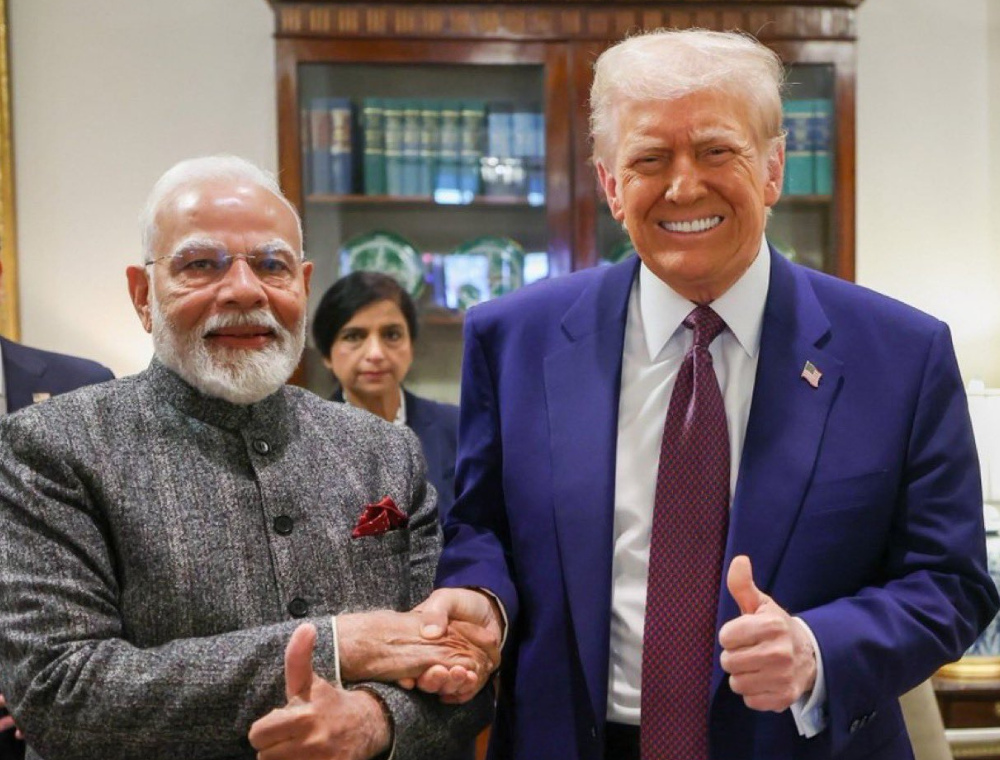
A major development is unfolding on the global trade front: India has openly challenged the United States, and tensions are escalating quickly. After years of legal disputes at the World Trade Organization (WTO), India has decided to take matters into its own hands. Starting from June 8, India is set to impose heavy tariffs on select American goods—an announcement that has sent shockwaves not just through Washington, D.C., but across the world.
This move could significantly impact billions of dollars’ worth of U.S. exports and potentially trigger a new chapter in global trade wars. So what’s the story behind this bold move? Why is India retaliating now, and how could this affect U.S.-India relations?
The roots of this issue trace back to 2018, during the presidency of Donald Trump. At the time, the U.S. administration invoked Section 232 of the Trade Expansion Act to impose steep tariffs on steel and aluminum imports—25% on steel and 10% on aluminum—citing national security concerns. India was among the countries affected by these tariffs, resulting in an estimated loss of $7.6 billion in exports to the U.S.
While the U.S. claimed the tariffs were necessary to protect its defense industry from over-reliance on foreign metals, India and several other countries accused the U.S. of protectionism. India took the matter to the WTO and requested consultations, sparking years of negotiations from 2018 to 2025. Despite repeated efforts, no resolution was reached.
Now, in 2025, India has taken a firm stand. It has formally notified the WTO’s Dispute Settlement Body, stating that the U.S. tariffs are unjustified. India has announced its intention to impose retaliatory tariffs on 29 American products unless a resolution is reached within 30 days. If the U.S. fails to respond satisfactorily, India will begin implementing tariffs after June 8.
The United States, however, has rejected India's notice, repeating its original argument that the tariffs are essential for national security—an area they claim the WTO has no authority to question. This has placed India in a position where it feels compelled to respond in kind.
India’s proposed countermeasures are targeted and strategic. The country plans to impose tariffs equivalent to the $7.6 billion in losses it suffered. The products likely to be affected include California almonds, Washington apples, American walnuts, and certain metal goods—products that heavily rely on the Indian market for sales.
If implemented, these tariffs could provoke a retaliatory response from the U.S., potentially sparking a full-blown trade war reminiscent of the U.S.-China conflict in 2019. That trade war severely disrupted global supply chains, and a similar showdown between India and the U.S. could have equally significant consequences.
This raises a critical question about the role and effectiveness of the WTO. If a major economy like the U.S. refuses to comply with WTO rulings or engage in dispute resolution, does the global trade body still hold any real authority?
India’s firm stance reflects a broader shift in its global posture. No longer willing to be sidelined, India is asserting its economic interests more aggressively. The country has made it clear that it will not back down, even if it means confronting a global superpower.
This escalating tension could also spill over into other aspects of U.S.-India relations, including ongoing technology deals, semiconductor supply chain cooperation, and defense collaborations. Many are questioning whether this was the right time for India to act. But given that its requests were ignored for seven years, and tariffs were further increased—up to 50% on steel and 20% on aluminum—India saw little choice but to respond.
In the end, India’s decision is a powerful signal—not just to the U.S., but to the world—that it will no longer remain silent in the face of economic pressure. It marks a new phase of economic self-reliance and global assertiveness for the country.
All eyes are now on June 8. Will India follow through with the tariffs? And if it does, how will the U.S. respond?
Disclaimer:
This article is for informational purposes only. The views expressed are based on publicly available reports and developments as of June 2025. Readers are advised to consult official sources or trade experts before forming conclusions. The author does not intend to provoke any political or diplomatic bias.




